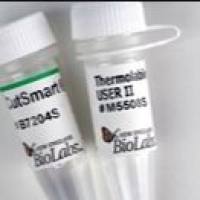A User-Friendly Computational Workflow for the Analysis of MicroRNA Deep Sequencing Data
互联网
497
Second-generation high-throughput sequencing is a robust and inexpensive methodology that is becoming an increasingly common technique for the study of microRNA (miRNA) expression levels in the central nervous system. This method allows for the identification of both known and novel miRNAs, reporting on the qualitative and quantitative levels these RNA species represent in any given sample. Numerous bioinformatic programs are currently available to analyze deep sequencing data but many require at least a partial understanding of the command line interface. In this chapter, we describe a user-friendly computational workflow guiding the user through the process from the initial FASTQ deep sequencing file to the identification of known and potentially novel miRNAs in a given experiment, as well as the assessment of the differential expression of these miRNAs between experimental samples. Furthermore, programs that can predict potential targets for these miRNAs are also highlighted.









